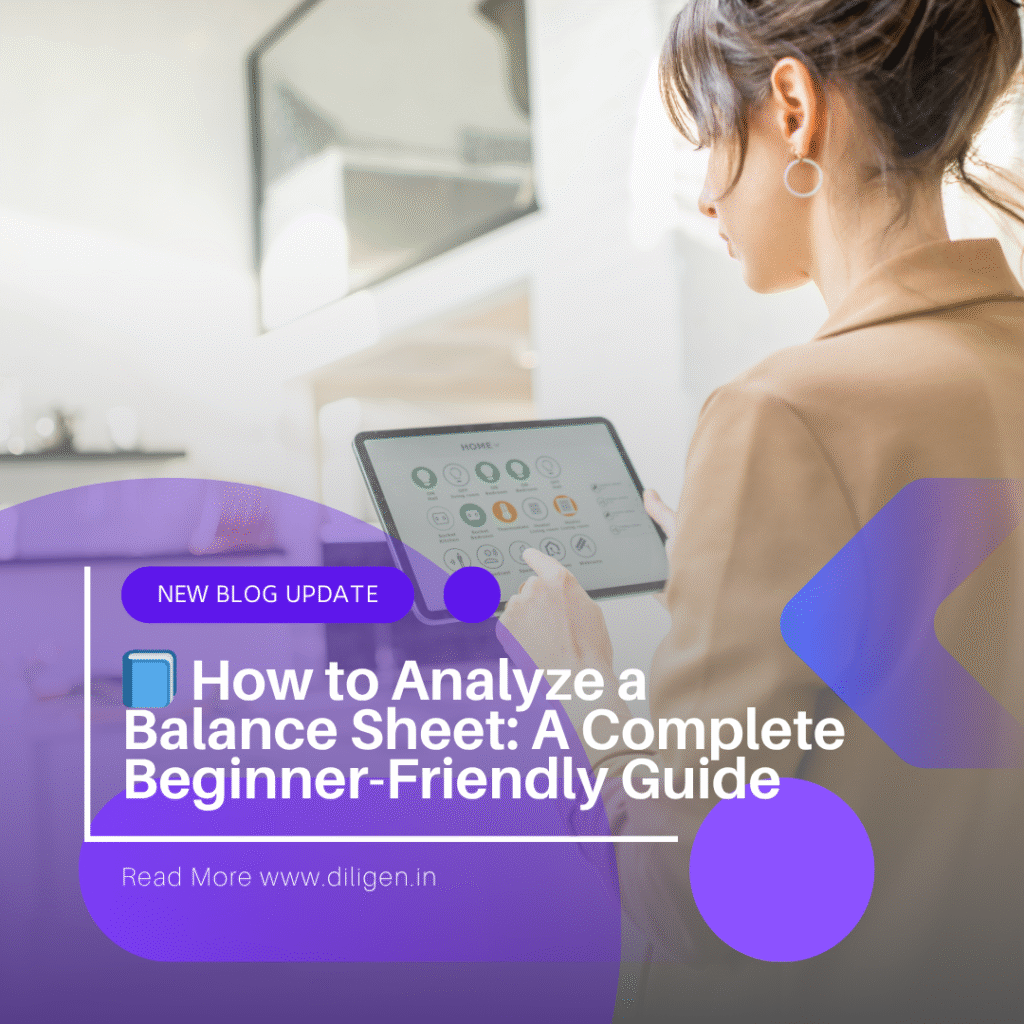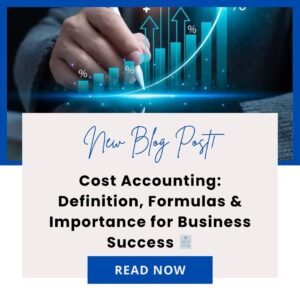📘 How to Analyze a Balance Sheet: A Complete Beginner-Friendly Guide
Introduction:
Understanding how to analyze a balance sheet is a vital financial skill that enables business owners, investors, and professionals to make informed decisions. While the balance sheet may appear overwhelming at first glance, breaking it down section by section makes it easier to interpret and apply effectively. In this blog, we’ll walk you through everything you need to know to confidently evaluate a company’s financial health using its balance sheet.
🧾 What Exactly Is a Balance Sheet?
To begin with, a balance sheet is a financial document that reflects a company’s assets, liabilities, and equity at a specific point in time. Unlike the income statement, which shows profitability over a period, the balance sheet gives a snapshot of what the business owns and owes right now.
It’s built around the accounting equation:
Assets = Liabilities + Equity
This equation ensures that the financial position is balanced, with resources on one side and the claims on those resources on the other.
Main Elements of a Balance Sheet
To analyze a balance sheet effectively, you must first understand its three primary components:
1. Assets
Assets refer to everything the company owns that holds measurable value.
Current Assets: These include cash, accounts receivable, inventory, and other items expected to convert into cash within 12 months.
Non-Current Assets: These include long-term investments, property, equipment, and intangible assets like patents or goodwill.
2. Liabilities
Liabilities are the company’s debts or obligations to external parties.
Current Liabilities: These include short-term debts, accounts payable, and other liabilities due within one year.
Long-Term Liabilities: These consist of loans, lease obligations, and deferred tax liabilities that are due beyond one year.
3. Equity
Equity represents the owner’s stake in the business after all liabilities are subtracted from assets. It often includes:
Common or preferred stock
Retained earnings
Additional paid-in capital
🧠 How to Analyze a Balance Sheet Step-by-Step
Now that the structure is clear, let’s break down how to interpret each section for meaningful financial analysis.
✅ Step 1: Review the Asset Composition
Start by examining current assets, especially cash and receivables. A high cash balance indicates strong liquidity, but a large receivables balance might mean delayed payments from customers.
Then, check inventory levels. If inventory is increasing faster than revenue, the business could be facing demand issues or supply chain inefficiencies.
Non-current assets, such as equipment or intangible assets, should also be assessed. Excessive investments in fixed assets might tie up capital, while a low investment may suggest underutilization of resources.
✅ Step 2: Evaluate Liabilities and Debt Levels
Next, focus on the company’s liabilities. Begin with short-term obligations. Ideally, the business should have enough current assets to meet these without relying on additional financing.
Long-term liabilities provide insight into the company’s funding structure. While debt can support growth, too much of it may lead to financial strain. Look out for rising long-term debt without a corresponding increase in revenue or assets.
✅ Step 3: Examine Equity Strength
Equity reflects the value attributable to the owners. Positive and growing retained earnings generally indicate a profitable and sustainable business. On the other hand, negative equity can be a red flag, especially when paired with high levels of debt.
Additionally, reviewing the composition of equity—such as how much is retained earnings versus capital contributed—can reveal the company’s reliance on past profits or investor funds.
📐 Key Ratios for Deeper Insight
To go beyond just reading numbers, use financial ratios. These offer clarity and context when comparing performance across time or with competitors.
1. Current Ratio
Formula: Current Assets ÷ Current Liabilities
This ratio shows the firm’s ability to meet short-term obligations. A ratio above 1 is typically healthy.
2. Quick Ratio
Formula: (Current Assets – Inventory) ÷ Current Liabilities
Also known as the acid test, it’s a stricter measure of liquidity that excludes inventory.
3. Debt-to-Equity Ratio
Formula: Total Liabilities ÷ Shareholders’ Equity
This ratio helps assess financial leverage. A high ratio may indicate excessive debt reliance.
4. Return on Equity (ROE)
Formula: Net Income ÷ Shareholders’ Equity
ROE evaluates how effectively the company uses shareholders’ funds to generate profit.
🔄 Compare Over Time and Against Industry Averages
Analyzing a balance sheet once offers value, but comparing it across multiple periods gives true perspective. Look for trends such as improving liquidity or increasing debt. Additionally, benchmarking the company’s performance against industry standards provides context—what’s high or low in one sector may be normal in another.
🚩 Red Flags You Shouldn’t Ignore
During your analysis, be alert for warning signs like:
Constant negative working capital
Significant increases in liabilities without asset growth
Declining equity or retained earnings
Ballooning inventory or overdue receivables
Spotting these early can help prevent future financial distress.
🧾 Final Thoughts
In summary, a balance sheet is much more than a static table of numbers. When analyzed correctly, it tells a dynamic story of a company’s financial resilience, operational efficiency, and risk level. Whether you’re investing, managing, or advising, the ability to decode a balance sheet empowers you to make smarter, data-backed decisions.
🤝 Need Expert Help?
At Diligen Professional Solutions, we specialize in remote accounting, financial health assessments, and Virtual CFO services for clients worldwide. Our team can help you read and interpret your balance sheet, ensuring you always stay one step ahead.
📩 Book your free consultation today at www.diligen.in and let us help you turn your numbers into actionable strategies.





